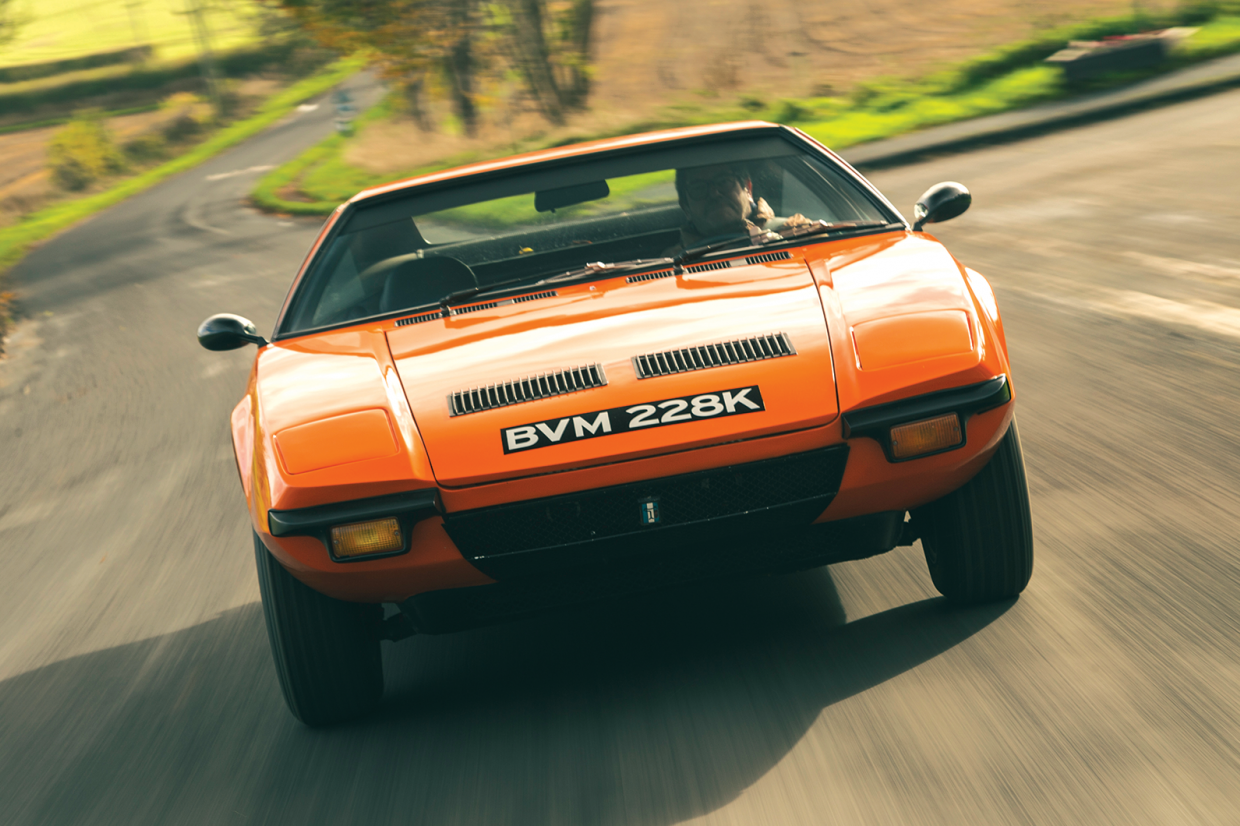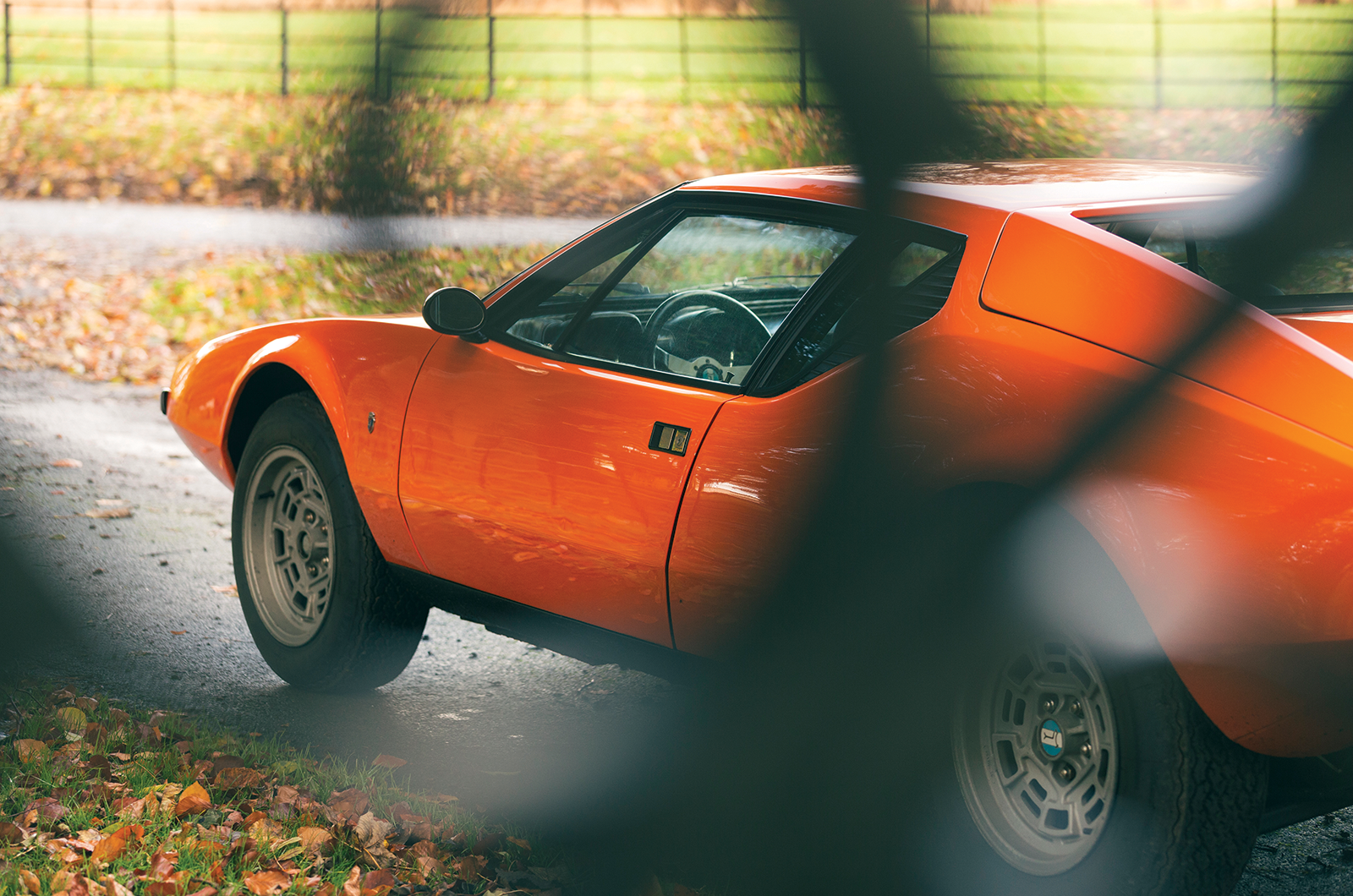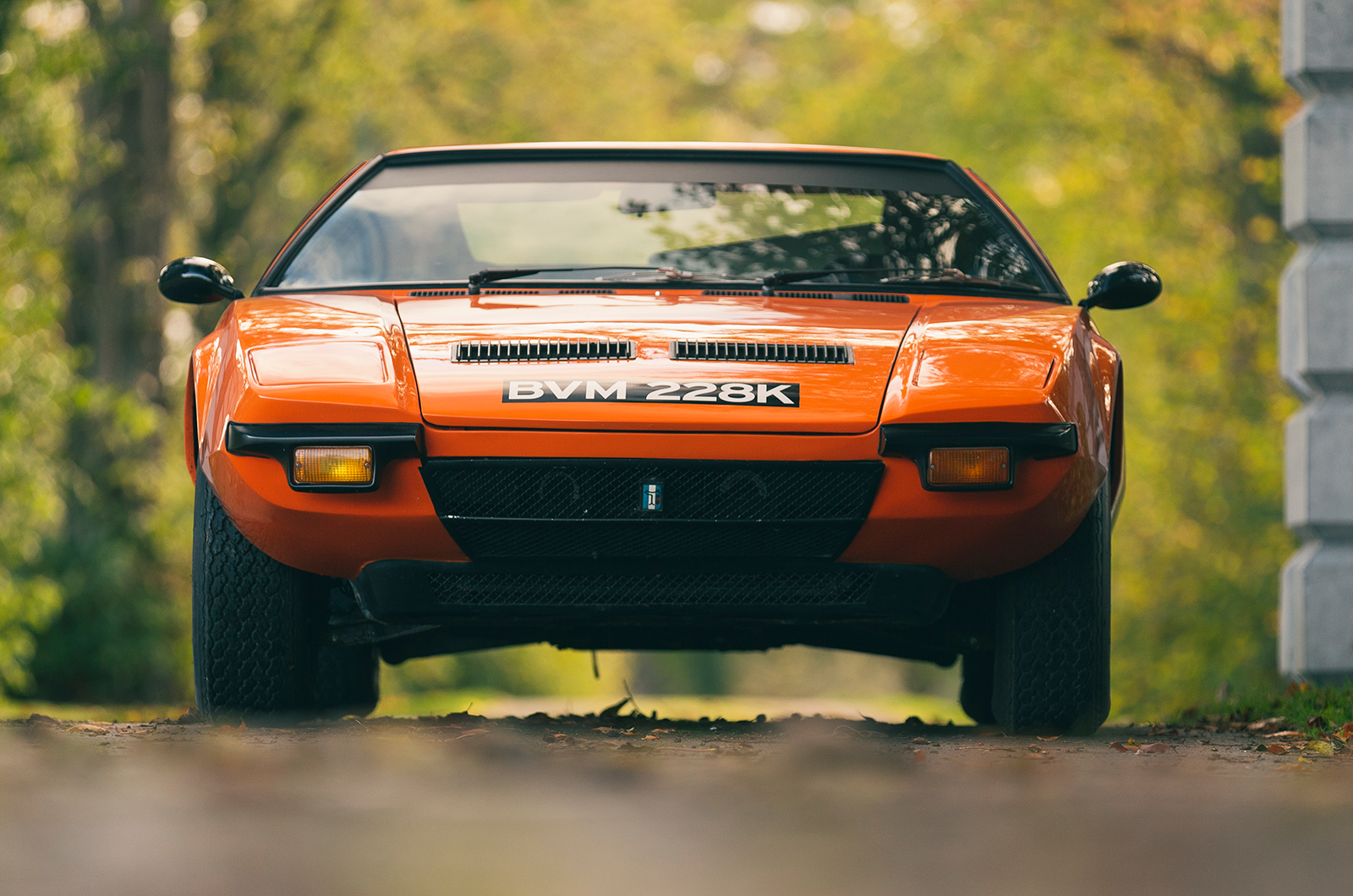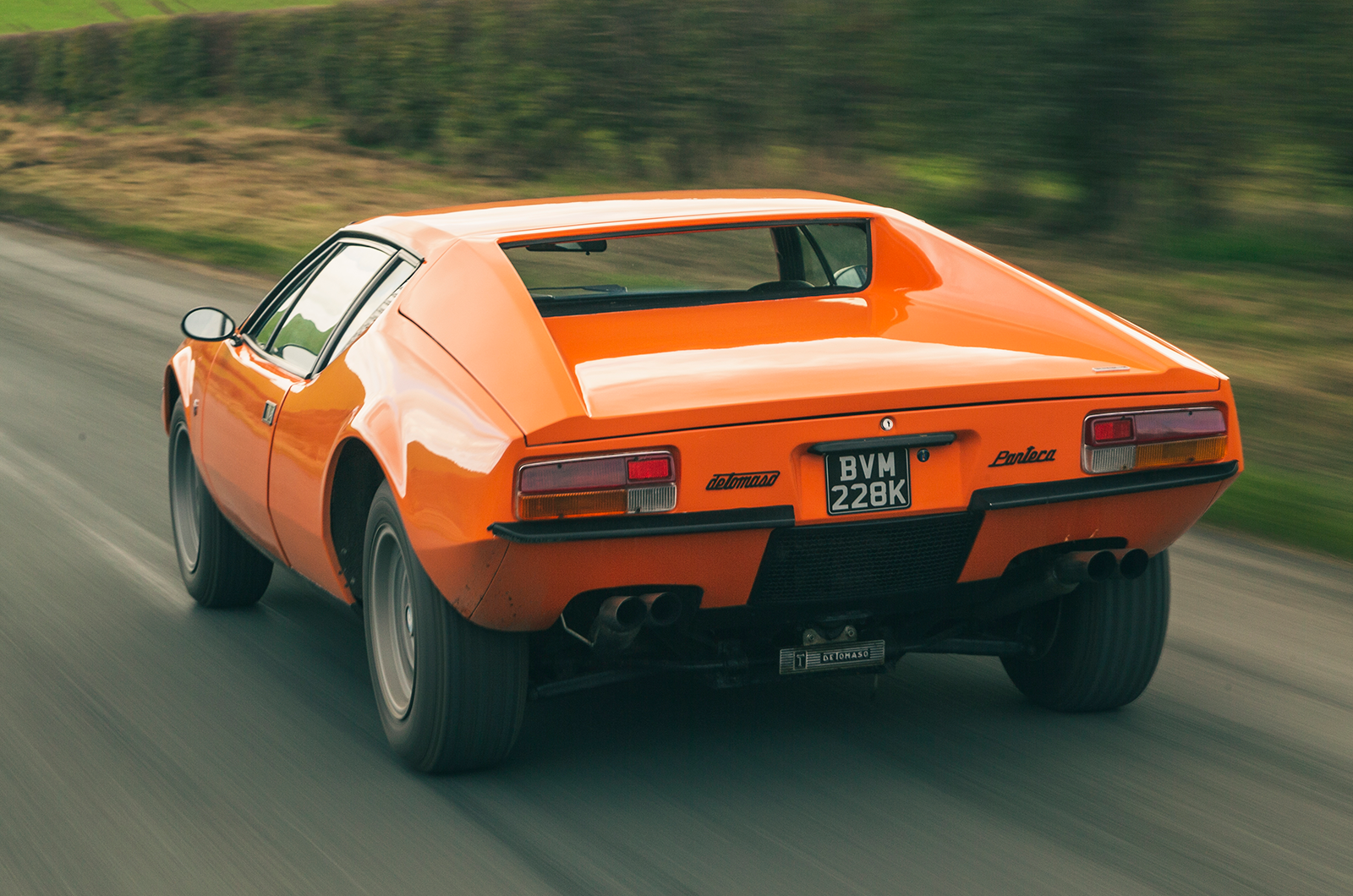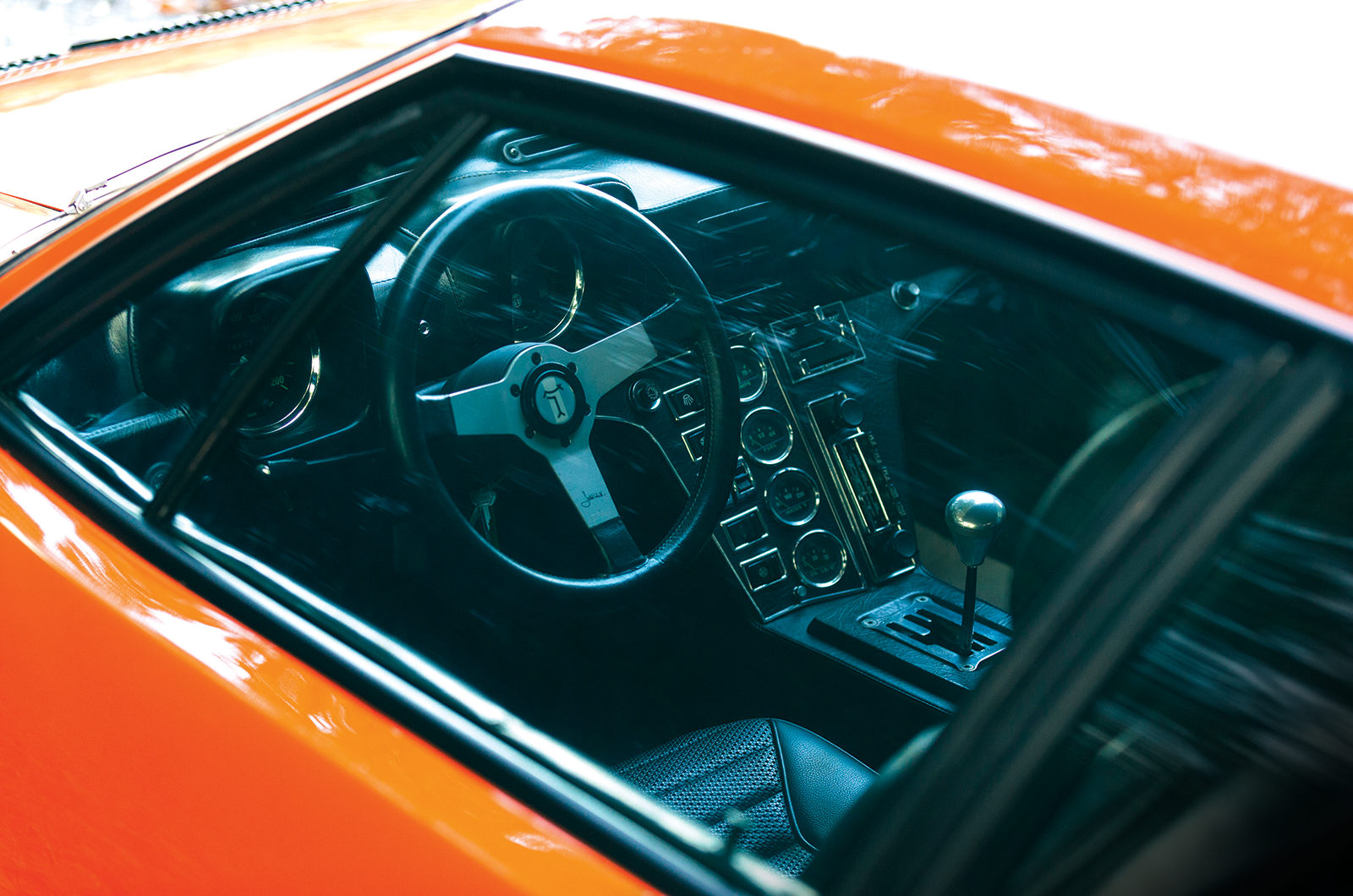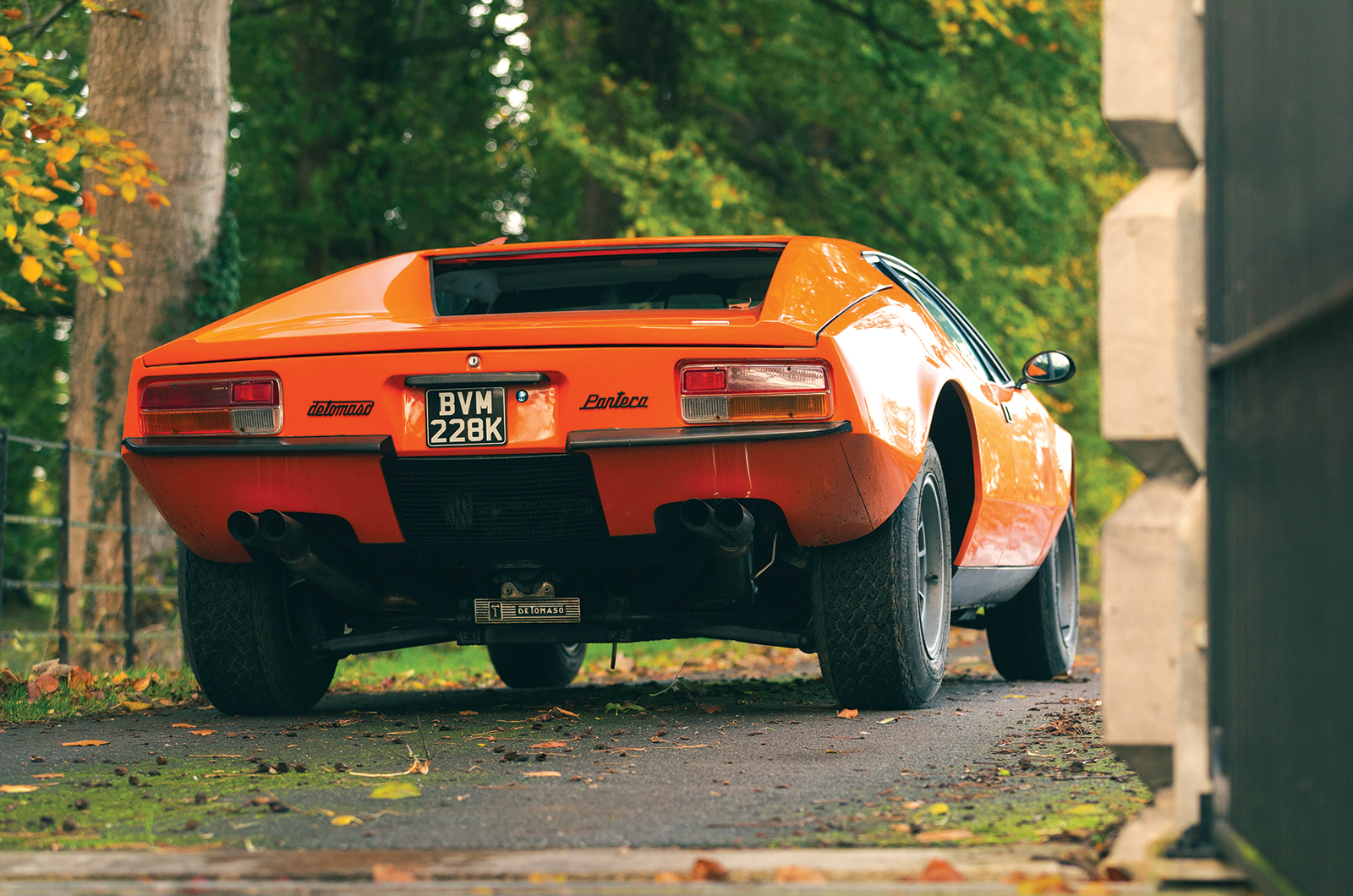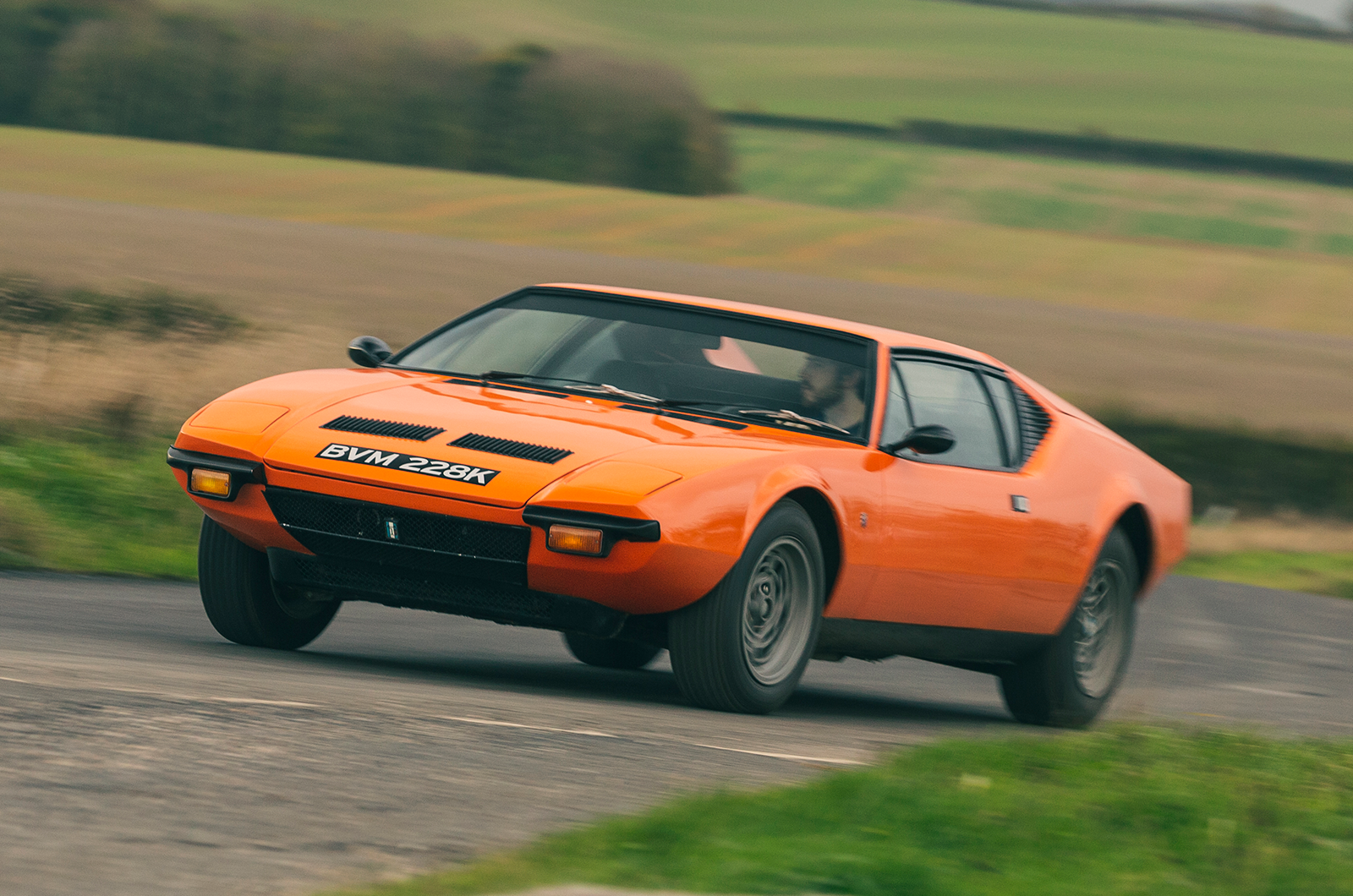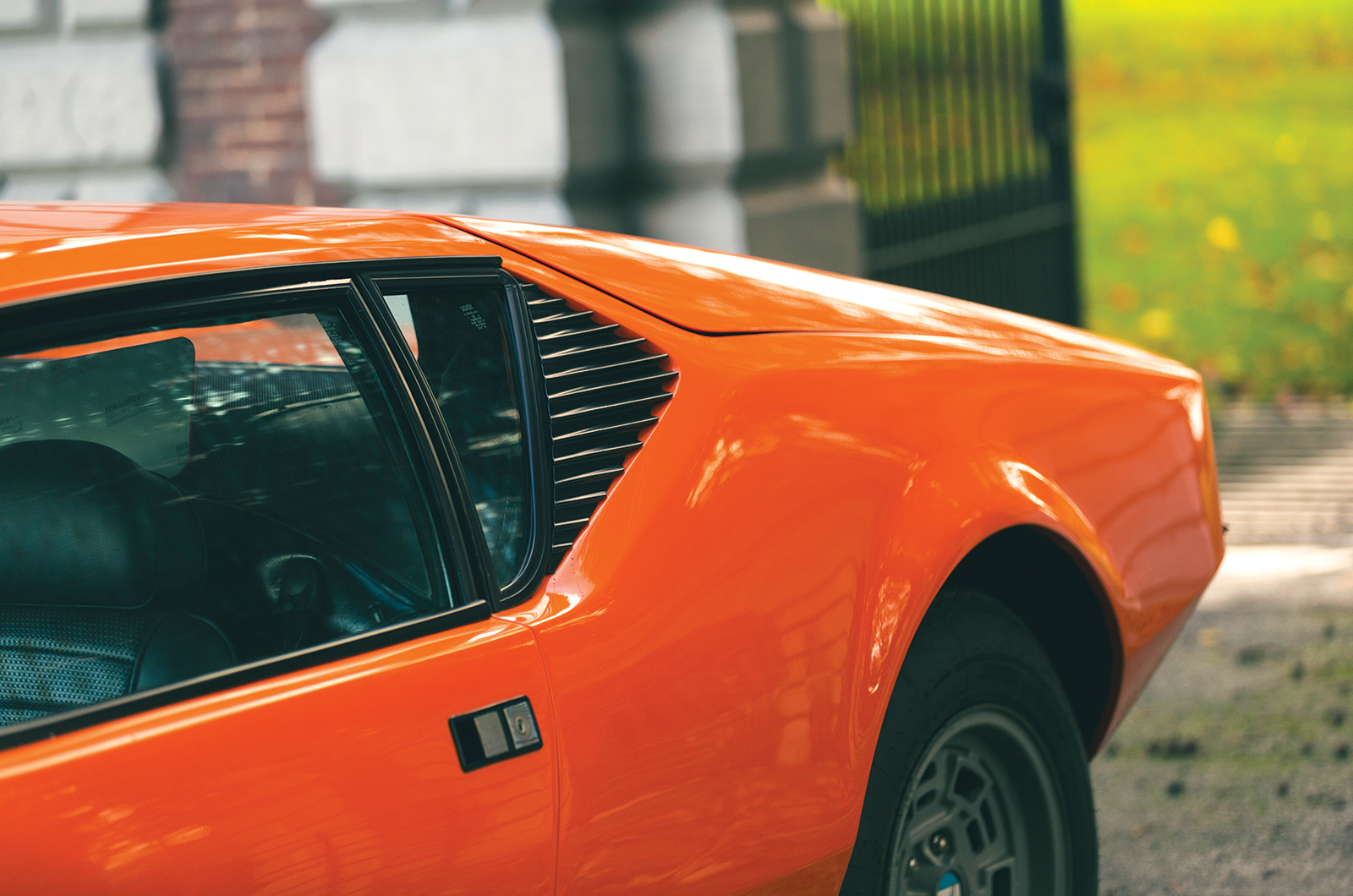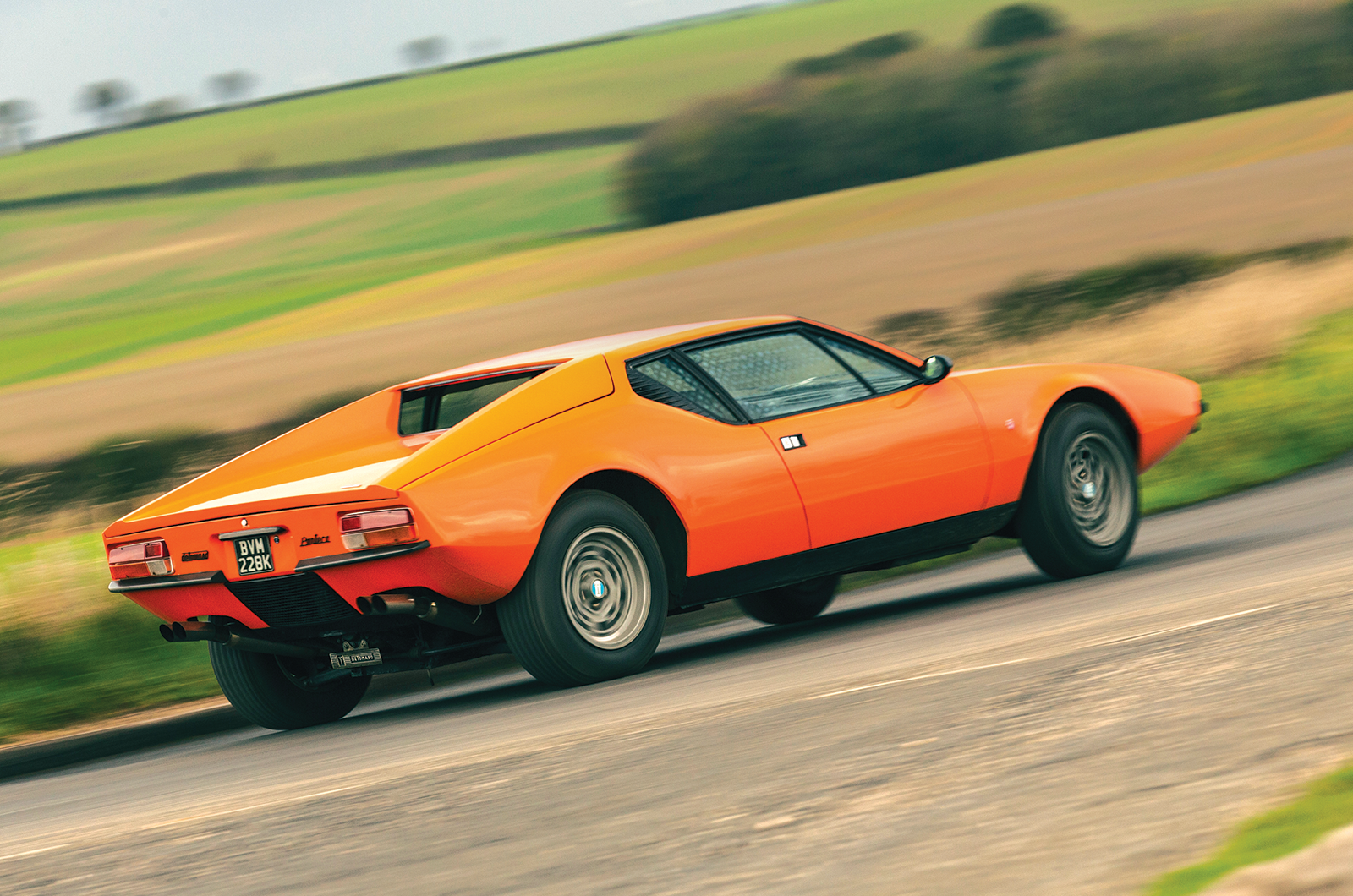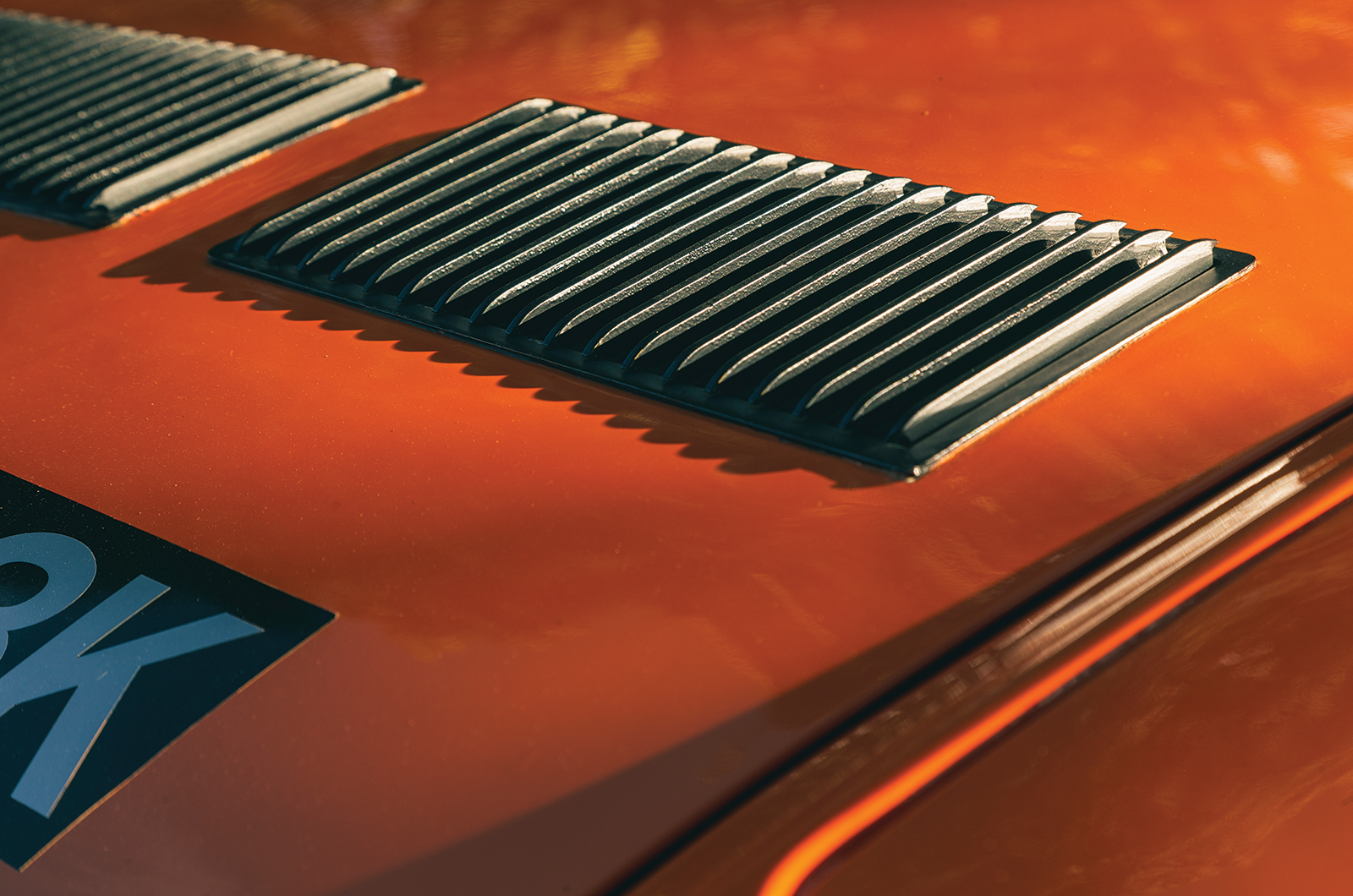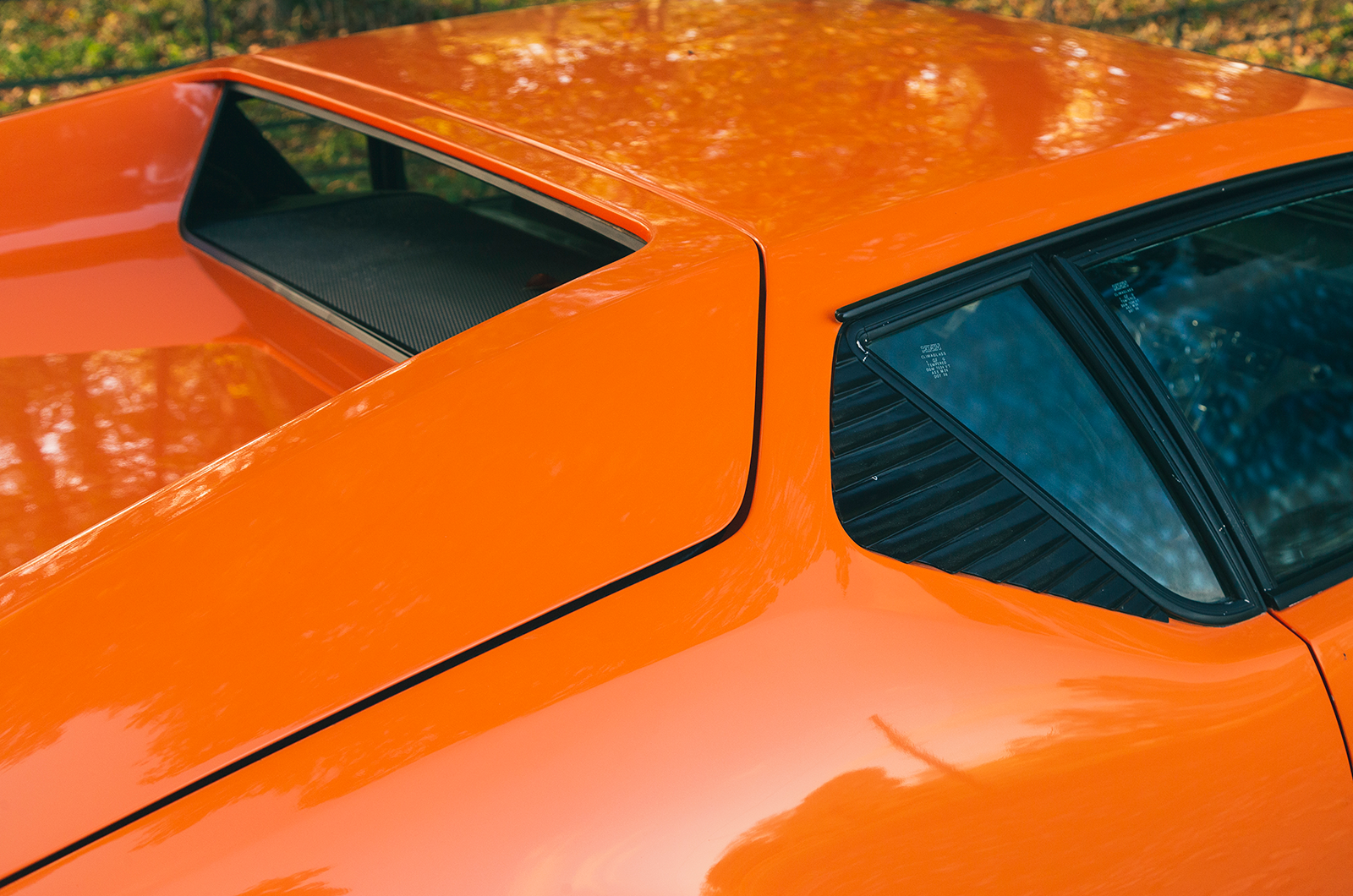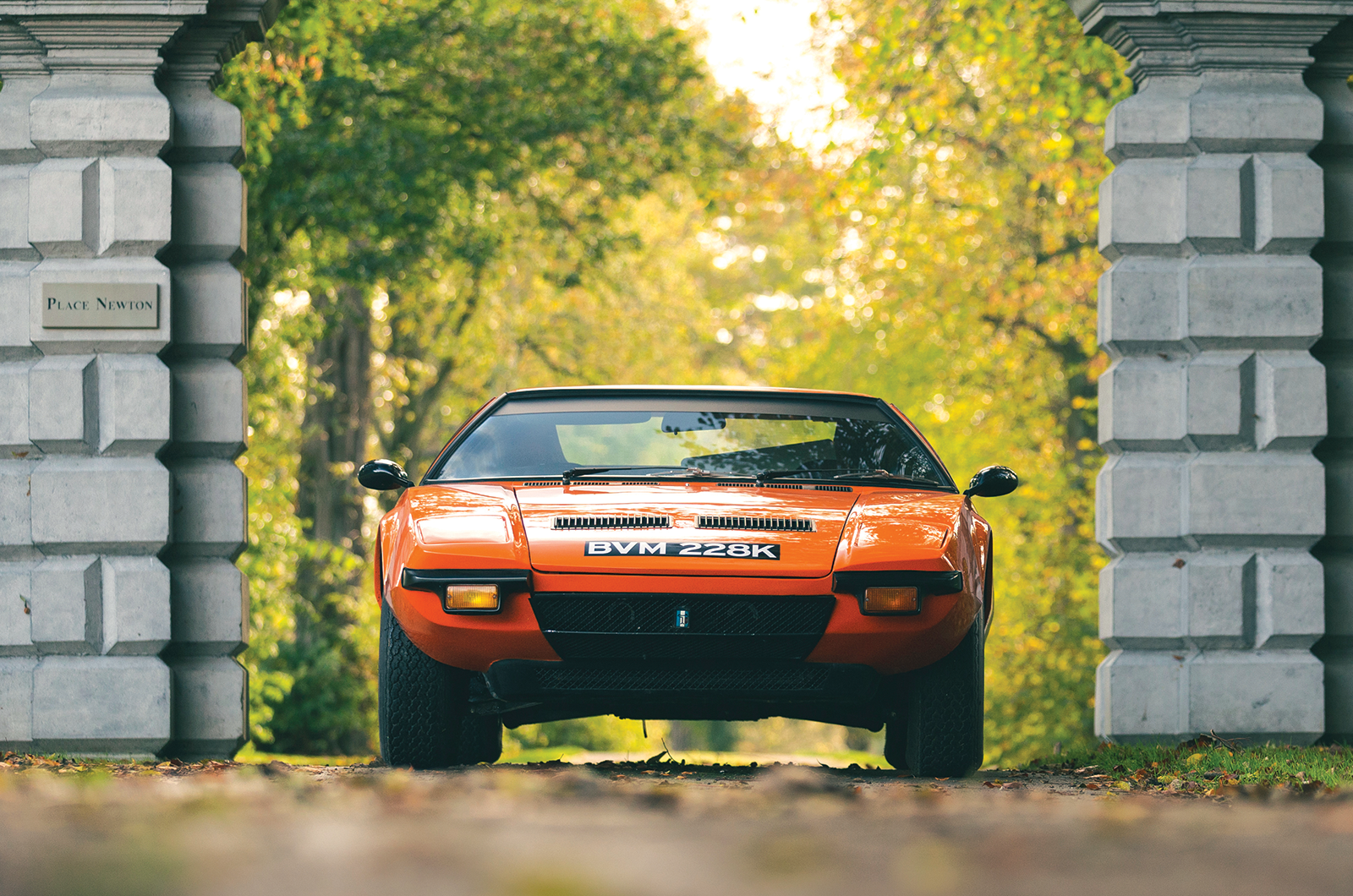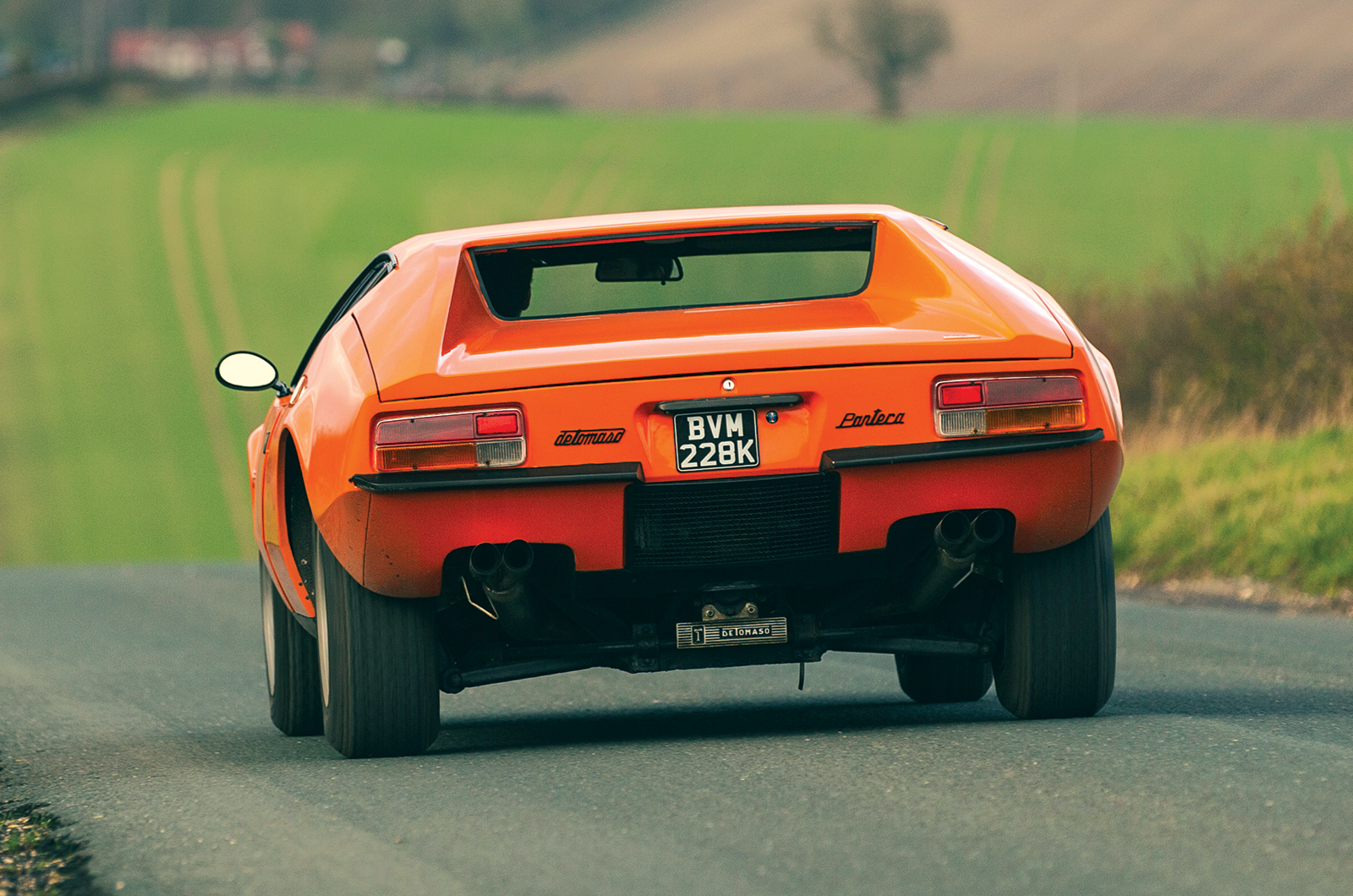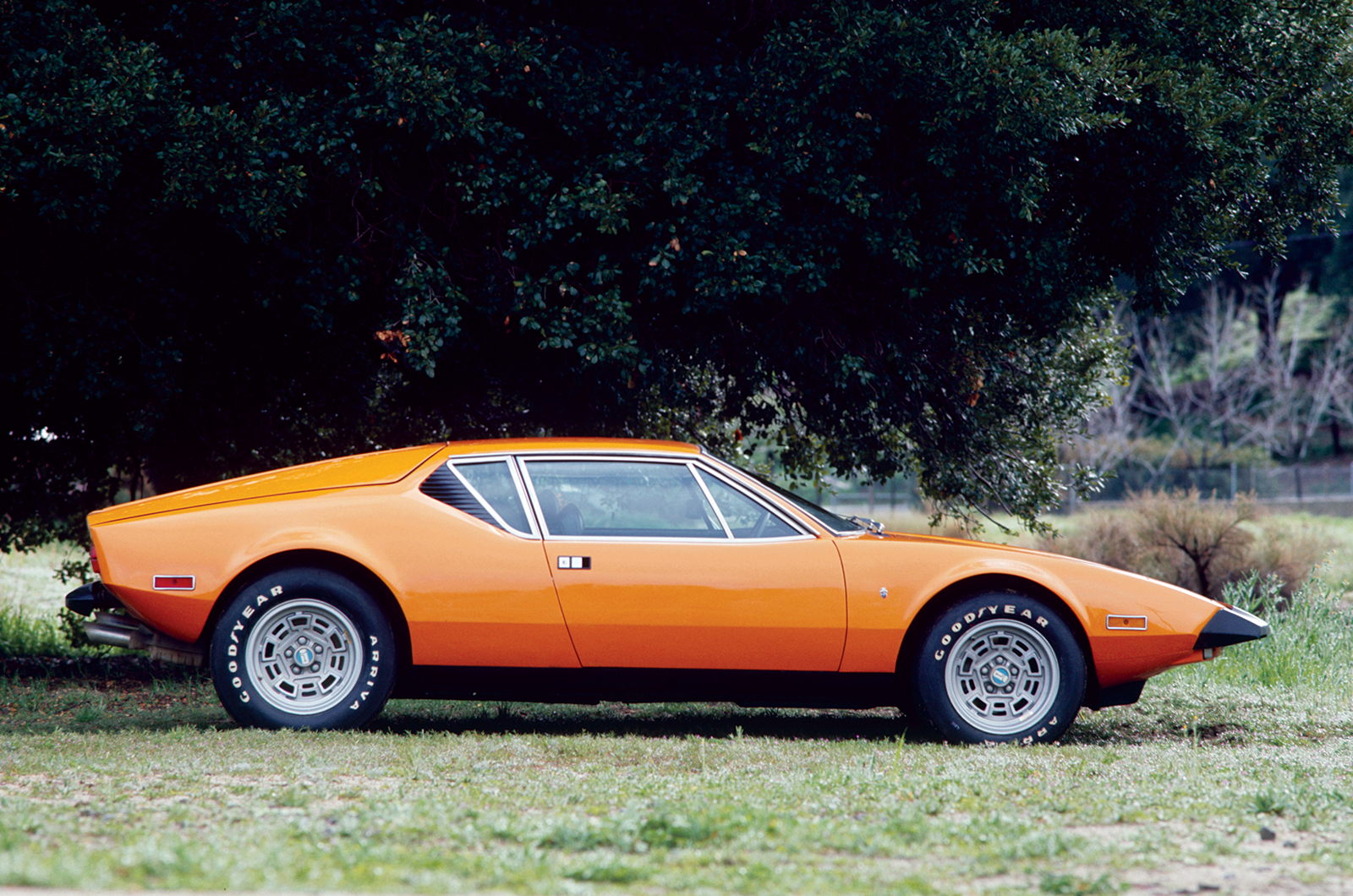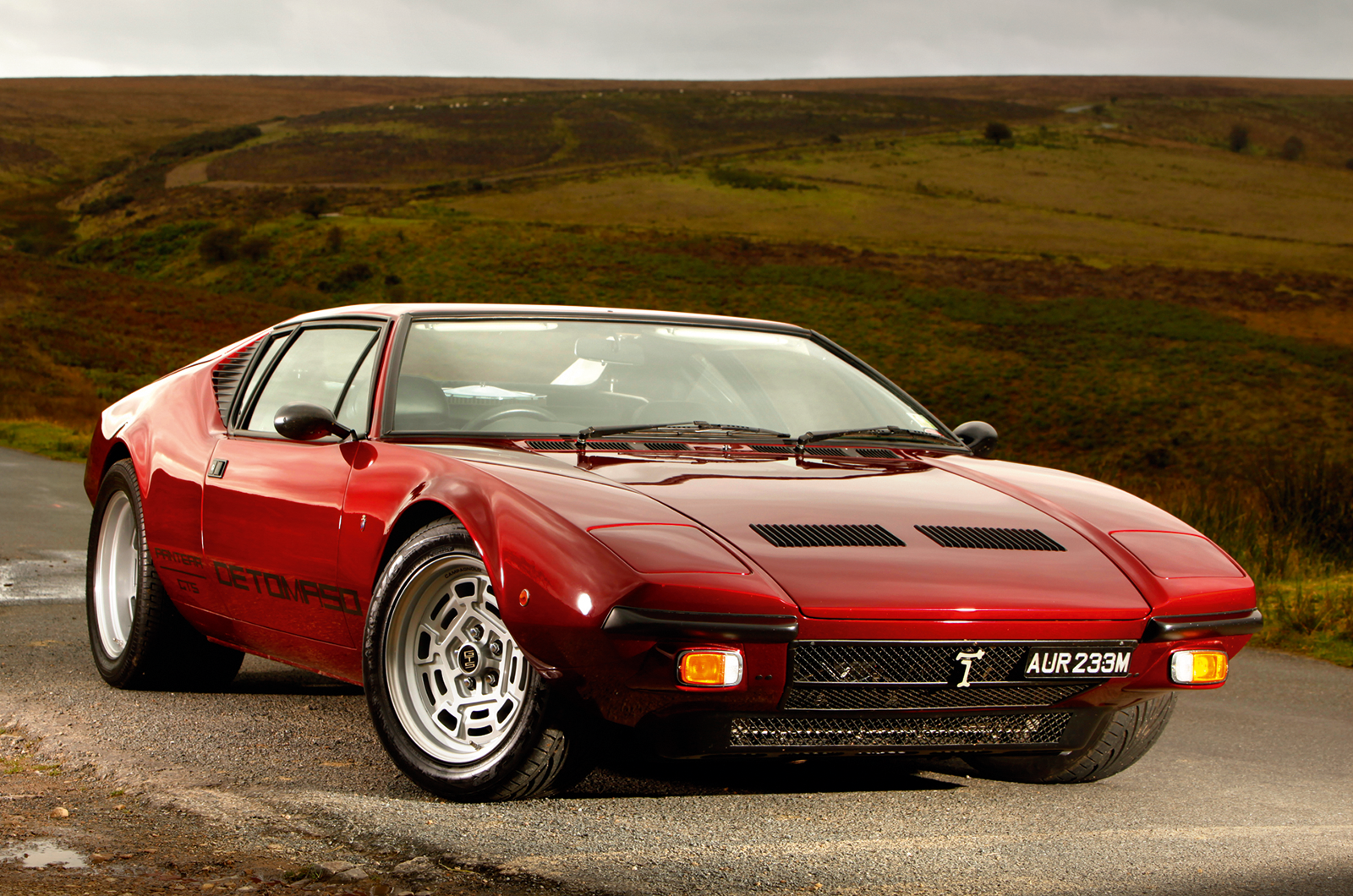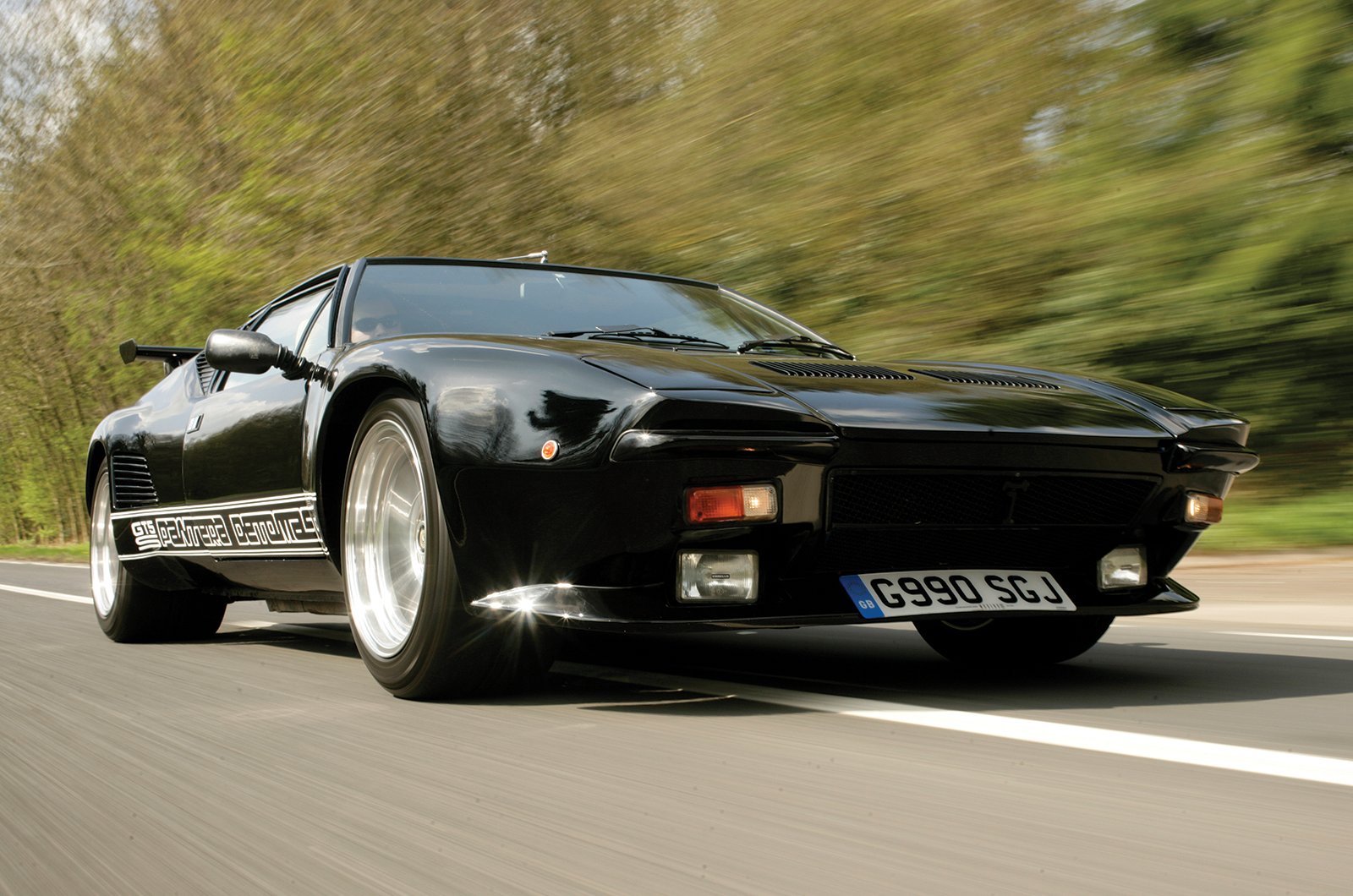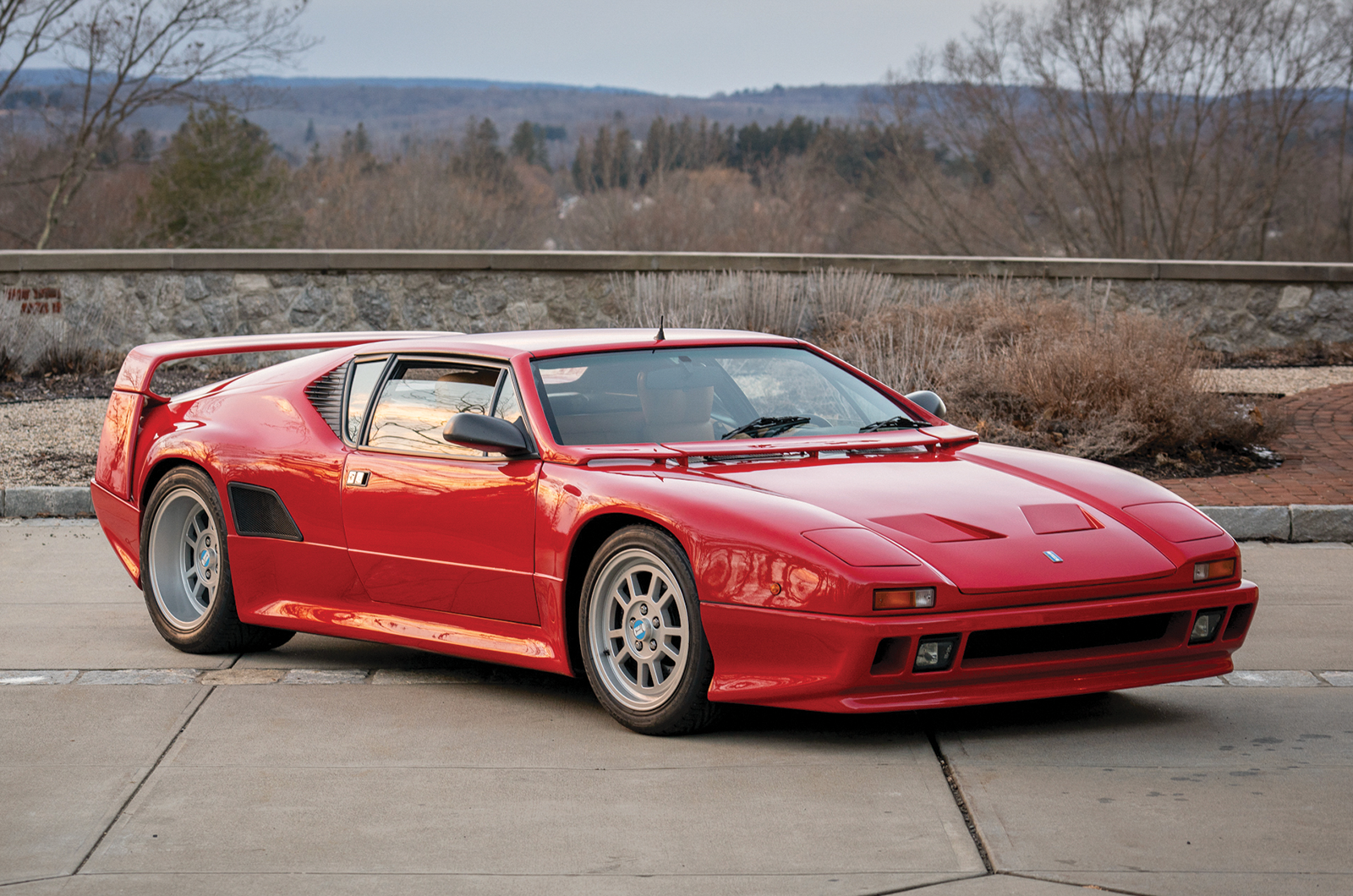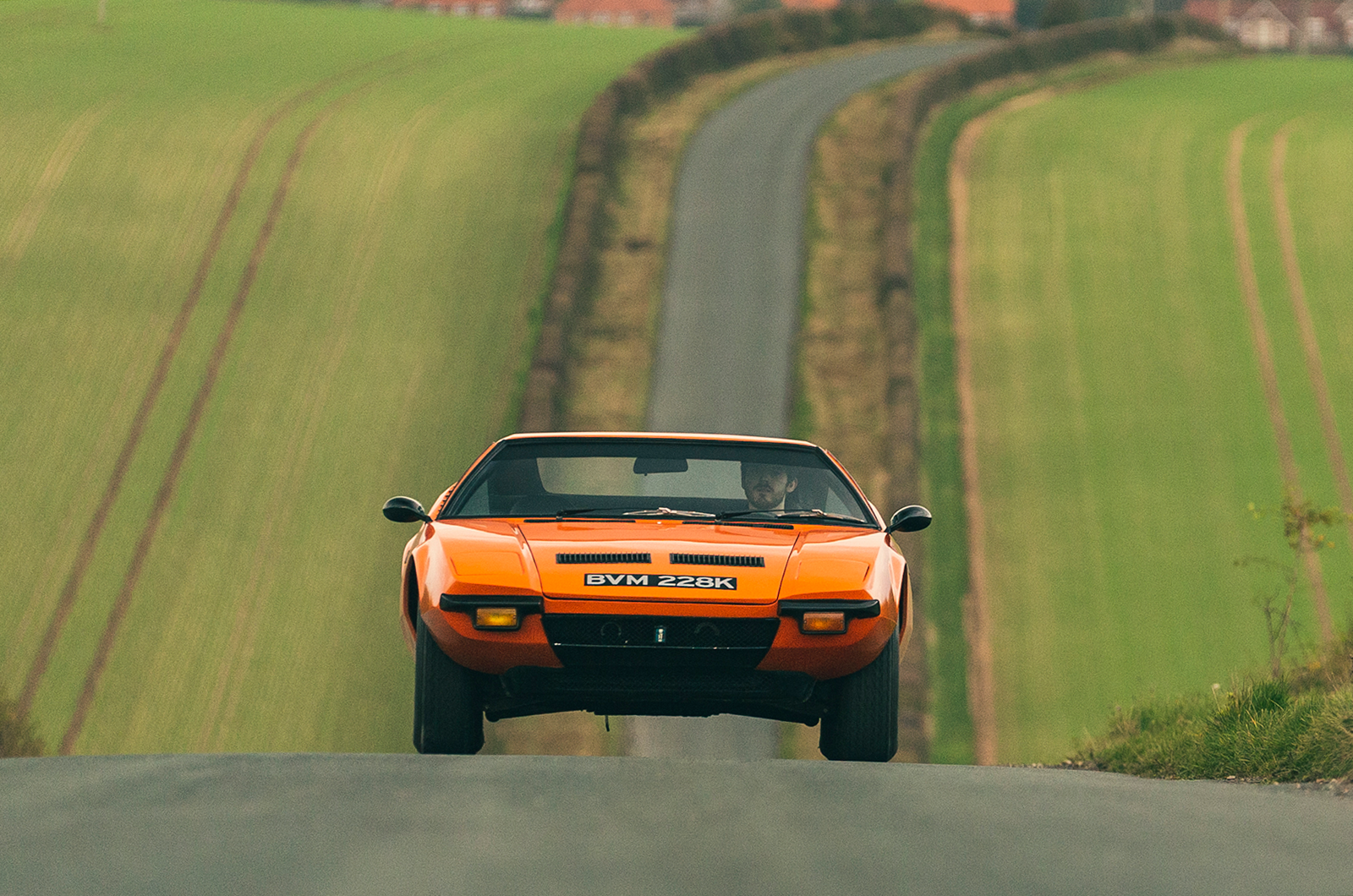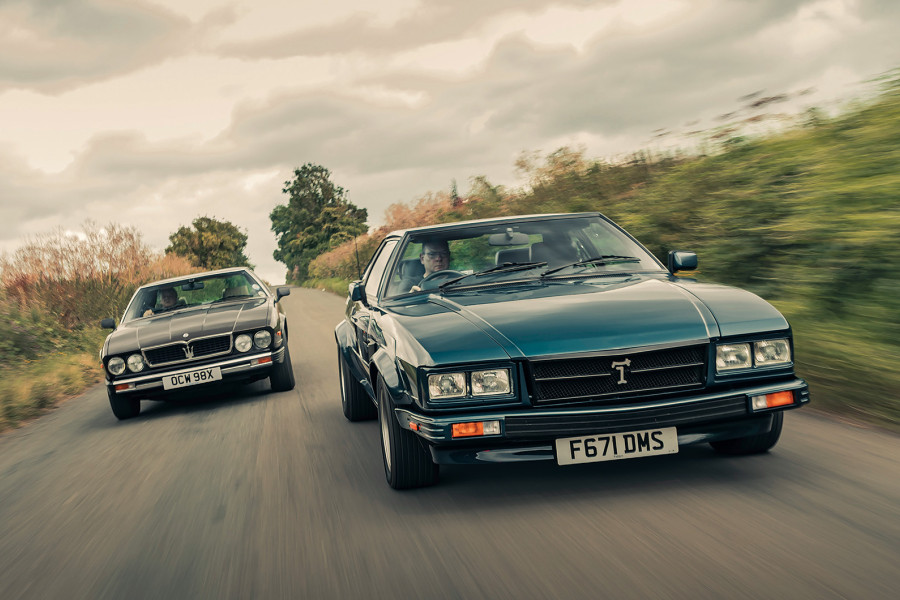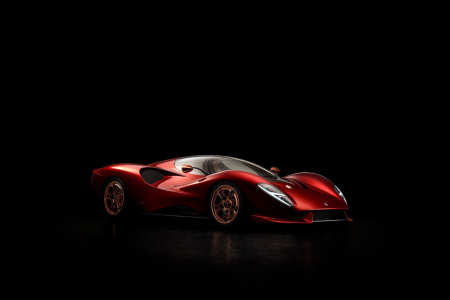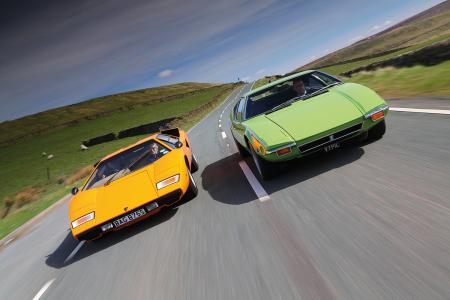It’s impossible to completely overlook the obvious shortcomings in the hastily developed Pantera’s design, however. The delicate nose is worryingly light at speed, in drastic need of the front splitter the car later received, while the cooling system proved marginal even when in good working order.
Crisp lines on the classic De Tomaso Pantera
There are ergonomic challenges, too, that harm the car’s promised usability. As well as that hefty clutch, the main gauges are obscured by the steering wheel, and the helm itself is both offset and mounted at an awkward angle.
Ford couldn’t tolerate such glitches for long, and in ’72 the Pantera L was introduced, rectifying these issues as well as promising better overall build quality.
Unfortunately, the Pantera L also had to deal with new Federal regulations that forced upon it unsightly impact bumpers, higher-riding suspension and smog-strangling of the engine.
Narrow track and skinny tyres give early Panteras an ‘on tiptoes’ look that was lost in later, more muscular versions
With the exception of the comparatively small number of Pantera Ls built for Europe, which managed to escape such compromises, the L proved to be one step forward and two back.
While later Panteras no doubt provided a better ownership experience, and with two decades of development became faster, fire-spitting machines of terrifying performance, the early cars remain a special glimpse into Alejandro’s original vision, an elegant and delicate-handling super-GT that could have been as ubiquitous and easy to use as a Corvette.
Images: Luc Lacey
Thanks to: Hugh Cholmley, Place Newton; Classic and Sportscar Centre
The life cycle of a Panther
The ‘pre-L’ Pantera was launched in 1970
1970-’72 The Pantera is first revealed in Modena in March 1970, and in New York a few weeks later.
The race-inspired chassis with all-independent suspension is by Gian Paolo Dallara, poached from Lamborghini.
The first production cars come in 1971, with 3000 built before the model is updated.
The Pantera L rectified quality issues © Getty
1972-’74 To address complaints about the first cars, which American journalists label ‘unfinished’, the Pantera L – for lusso, or luxury – is introduced.
Many quality issues are resolved and it is well received in the US, though its engine and looks are altered to meet Federal regulations (above).
Pantera GTS gets more power and quicker steering
1973-’85 The more aggressive Pantera GTS is unveiled, initially for the European market only, with a wider track, quicker steering and a 350bhp V8.
The US market gets 150 in 1974, but with the L’s engine. Later in the year Ford pulls out of the Pantera agreement, but De Tomaso continues selling the GTS until 1985.
Motorsport-inspired upgrades are apparent on the Pantera GT5
1980-’85 The Pantera GT5 puts developments from De Tomaso’s motorsport activities into a reworked chassis.
The car’s appearance drastically changes, with much wider wheelarches, side air intakes and a huge rear wing.
Pantera GT5S gets modified bodywork and updated interior
1984-’90 For the first time since its launch, the Pantera’s bodywork is altered, with the widened arches now integrated into the steel wings for the GT5S.
The interior is redesigned to be more luxurious, with the emphasis shifting from outright performance to a sports GT.
The Pantera is redesigned by Marcello Gandini to create the 90 Si
1990-’93 Marcello Gandini is called in to redesign the bodywork more thoroughly and the car moves to a tubular chassis as it is renamed the Pantera 90 Si.
The Cleveland V8 is replaced with a 5-litre fuel-injected engine, as found in the Ford Mustang.
Just 41 examples are built before De Tomaso discontinues the model to build the Guarà.
Factfile
De Tomaso Pantera
- Sold/number built 1971-’93/7260
- Construction steel monocoque
- Engine all-iron, ohv 5763cc V8, single four-barrel Autolite carburettor
- Max power 330bhp @ 5400rpm
- Max torque 325lb ft @ 3600rpm
- Transmission five-speed ZF transaxle, RWD
- Suspension independent, by unequal-length wishbones, coil springs, telescopic dampers, anti-roll bar f/r
- Steering rack and pinion
- Brakes ventilated discs
- Length 13ft 11in (4241mm)
- Width 5ft 1in (1803mm)
- Height 3ft 7½in (1092mm)
- Wheelbase 8ft 3in (2514mm)
- Weight 3145lb (1426kg)
- 0-60mph 5.8 secs
- Top speed 161mph
- Mpg 17
- Price new £6578
- Price now £50-100,000*
*Price correct at date of original publication
Enjoy more of the world’s best classic car content every month when you subscribe to C&SC – get our latest deals here
READ MORE
Tom Tjaarda: the Michigan maestro
Battle of the supercars: Miura vs Daytona vs Mangusta
Lamborghini Miura: The Italian Job reloaded
Charlie Calderwood
Charlie Calderwood is Classic & Sports Car’s Features Editor
